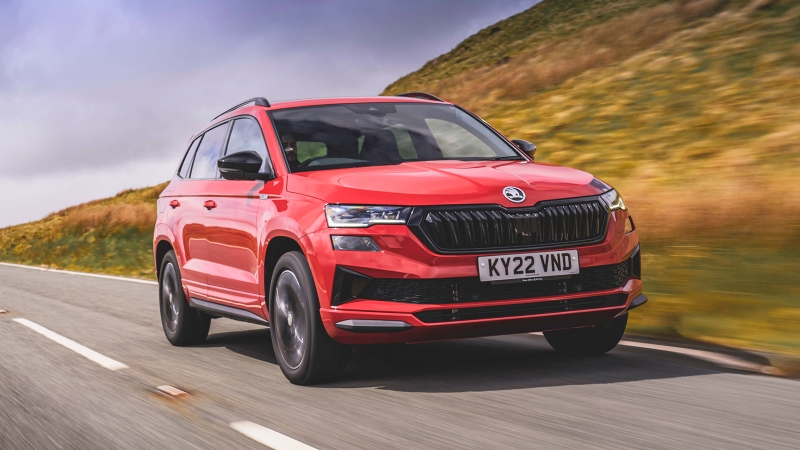

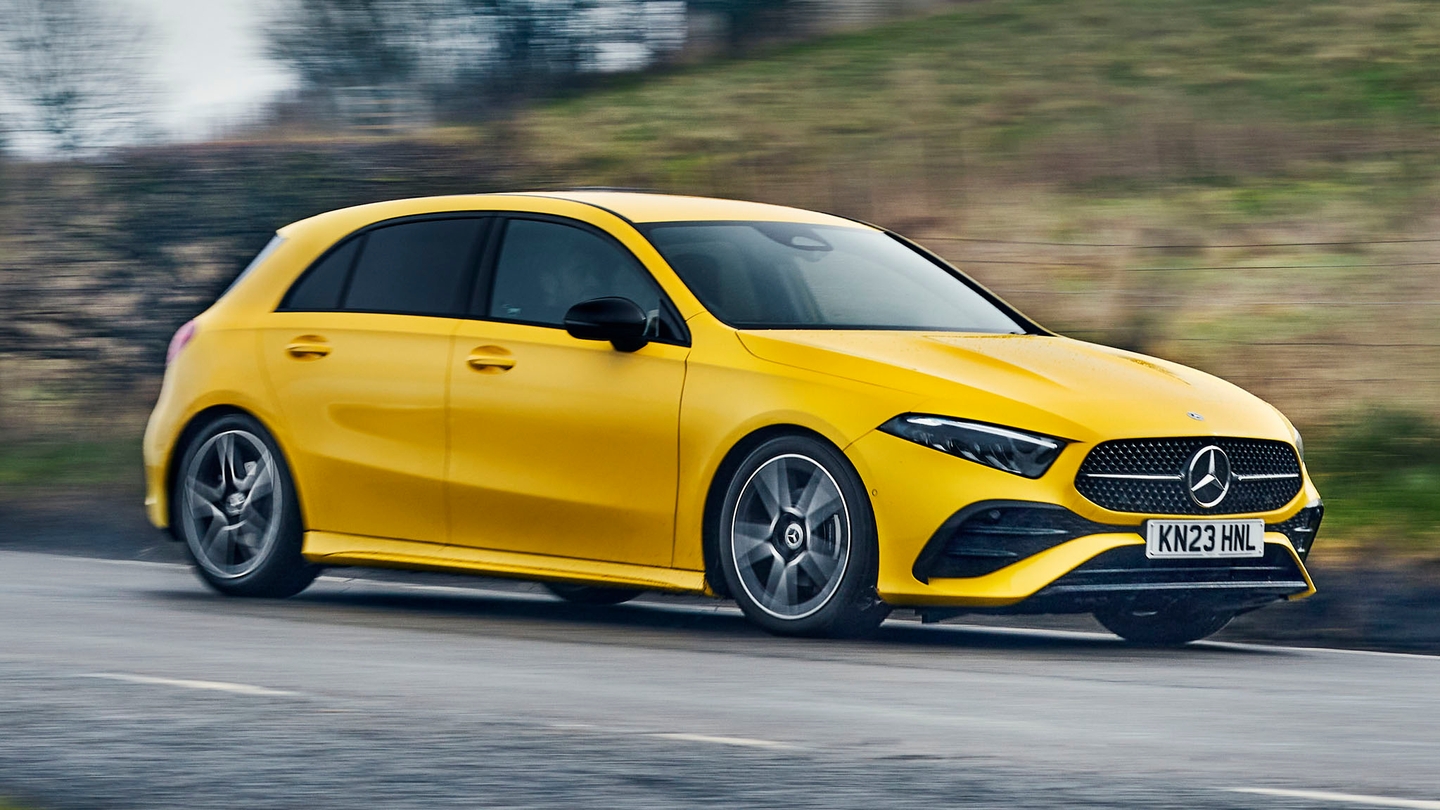
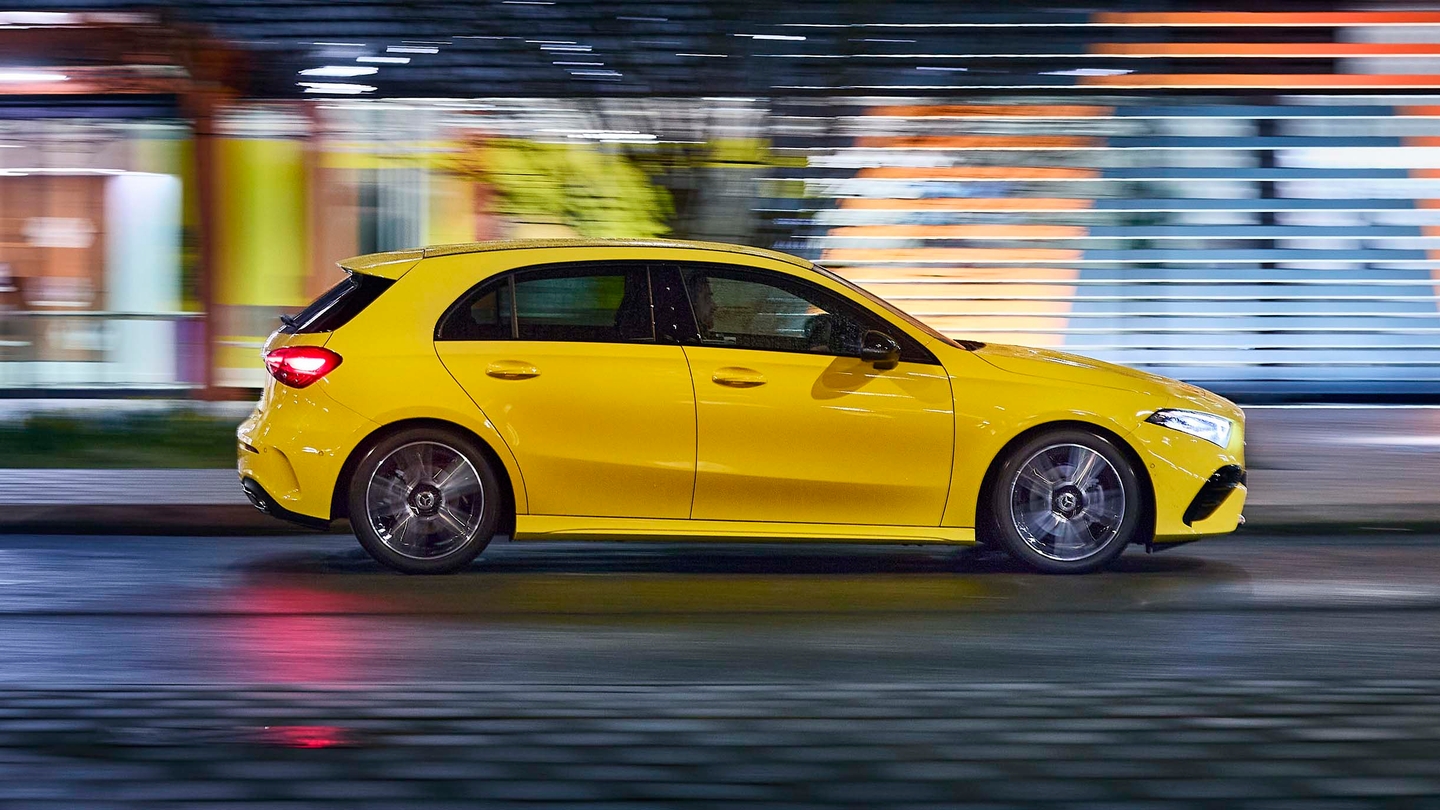


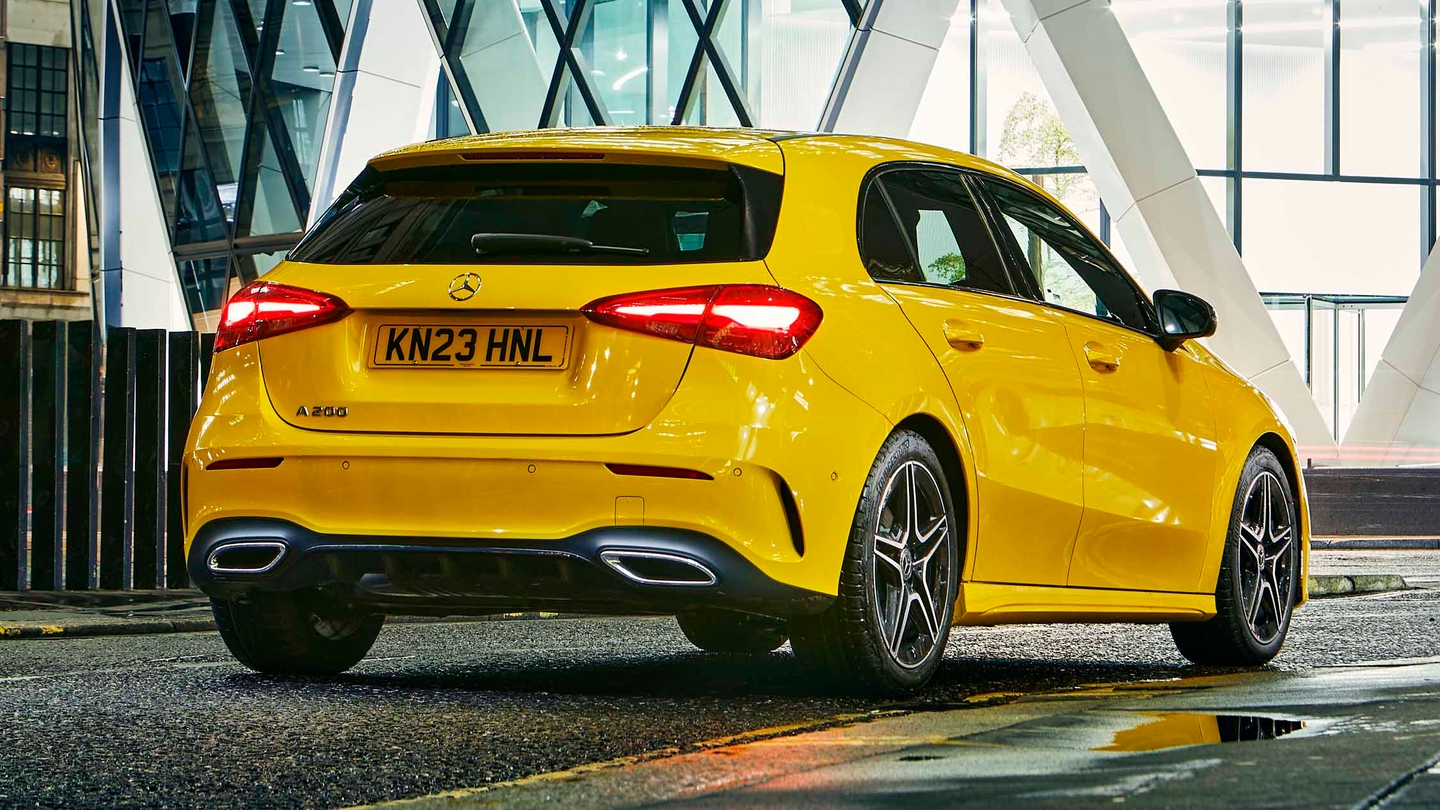
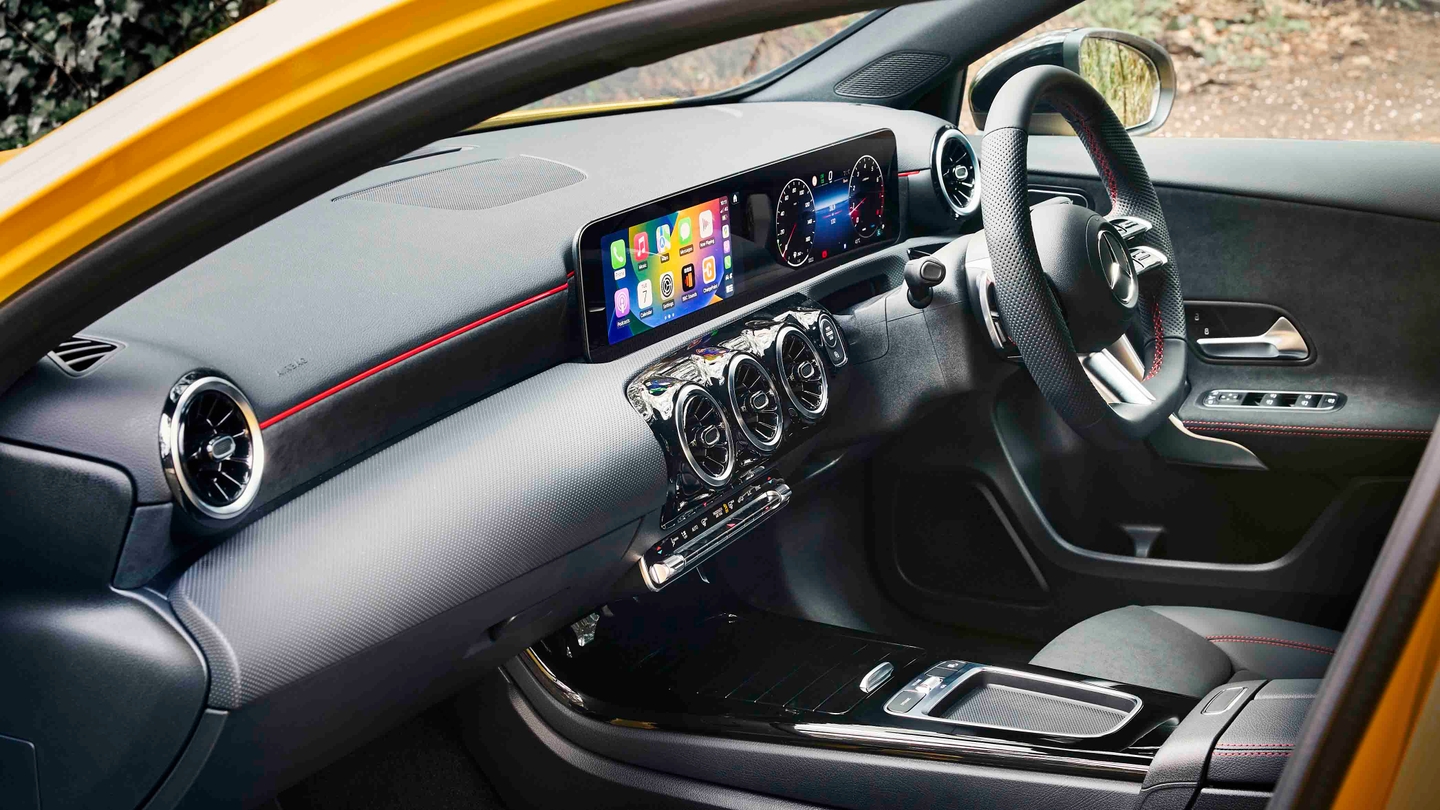
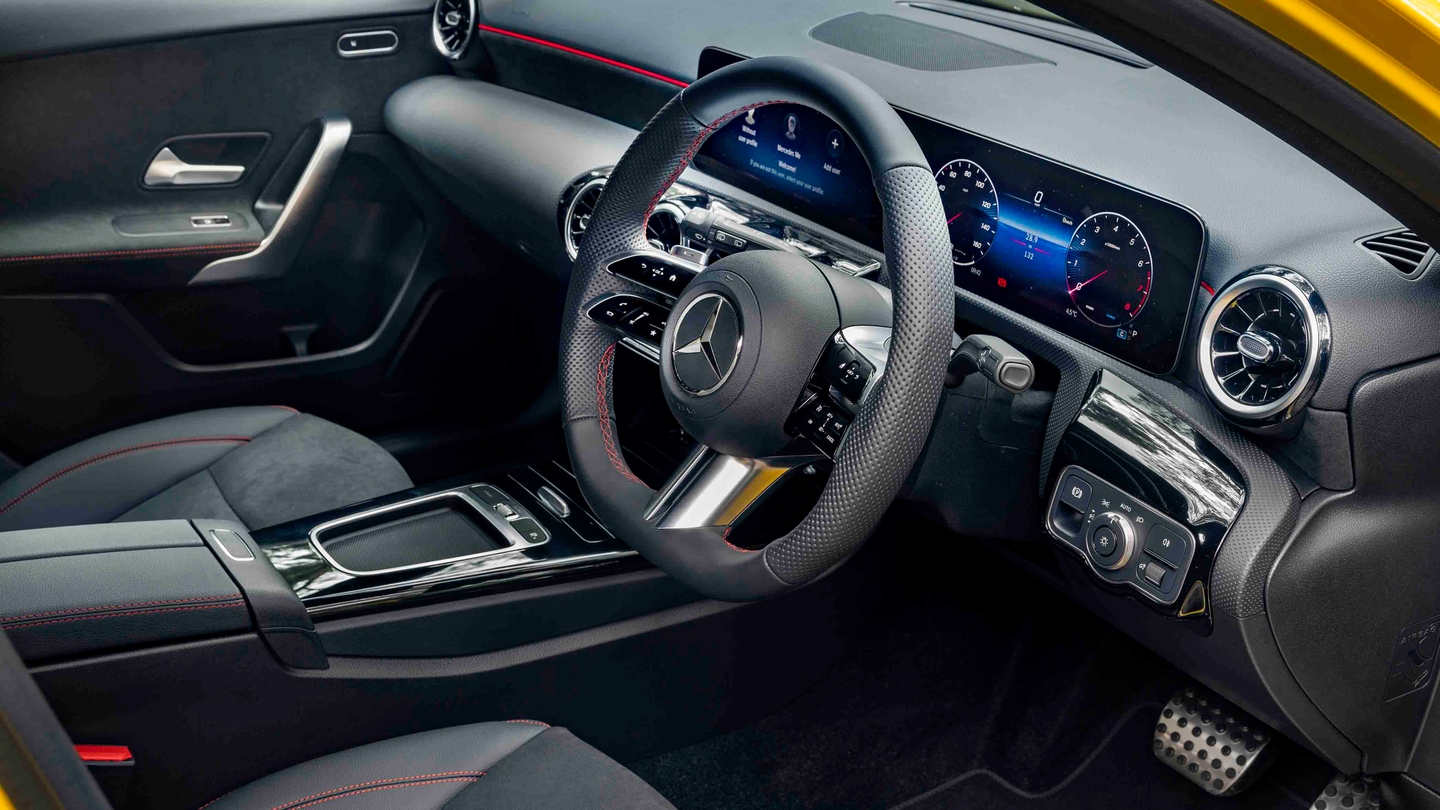
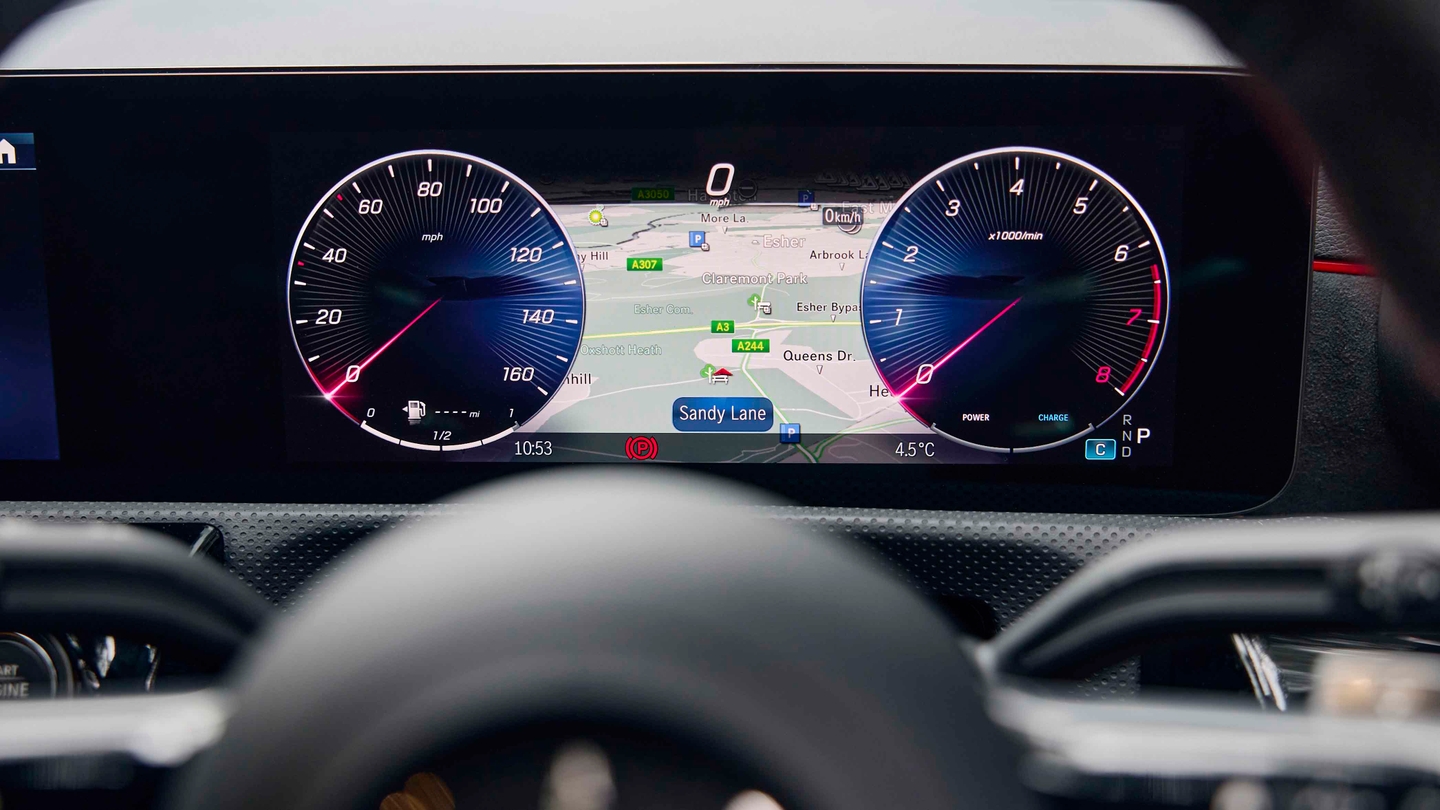
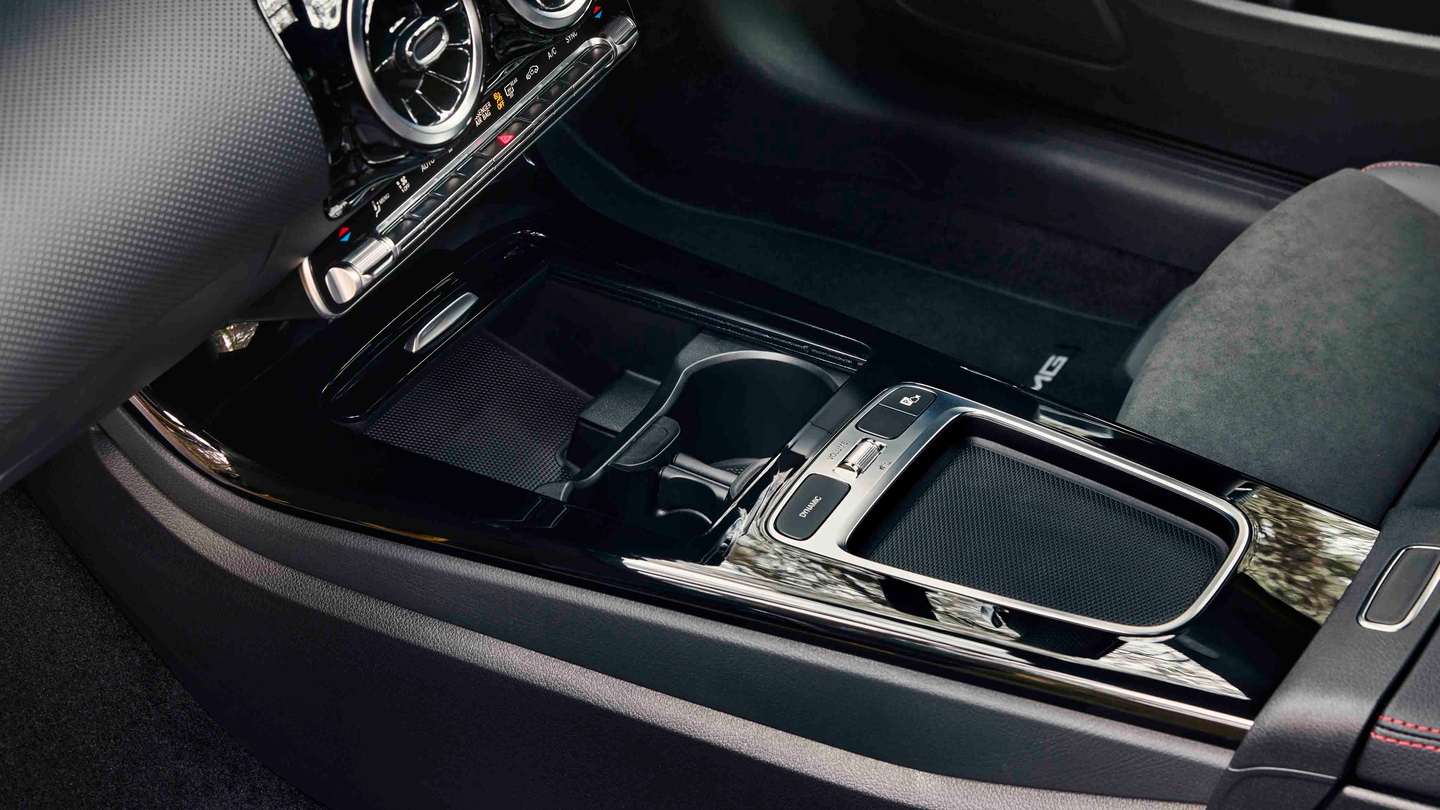


Mercedes A-Class Review
The Mercedes A-Class distils the brand’s qualities into a compact, city-friendly package.
Despite being the smallest car with a three-pointed star, it's one of the most popular models in the German brand’s lineup.
- Stylish, attractive interior
- Comfortable ride quality
- Strong engines
- Not as fun as a BMW 1 Series
- Standard infotainment setup looks cheap
- Not the most practical choice
Should I buy a Mercedes A-Class?
Ever since it first arrived in the late ‘90s, the Mercedes A-Class has been tasked with fitting the German brand’s qualities into a small, easy-to-park package. Now four generations in, the latest version is by far the best A-Class yet. The cabin is a showstopper, even compared to other premium options in this class, with upmarket materials, an elegant design and lots of on-board technology.
Competition among compact premium cars is fiercer than ever, however, with the BMW 1 Series and Audi A3 both muscling in on the A-Class’s turf. What’s more, alternatives such as the Mazda 3 and range-topping versions of the Volkswagen Golf and Ford Focus are waiting in the wings to steal whatever sales are left over.
"There isn’t a bad engine in the A-Class lineup, so you’d be perfectly justified in selecting the basic petrol, or the A180d diesel if you’re a long-range driver"
Mercedes updated the A-Class in 2023, with new lights, mild-hybrid tech for the engines, a new steering wheel and big infotainment screens as standard. The latter fixes one of our biggest bugbears with earlier A-Classes – although Mercedes giveth and taketh, because the handy trackpad and shortcut buttons disappeared in the facelift.
If you like the look and feel of the A-Class, but need a slightly more practical package, take a look at the Mercedes GLA SUV. You can also find the Mercedes CLA, which fits the A-Class’s running gear into a swoopy four-door coupe body.
Interior and technology
It feels like Mercedes spent most of its A-Class development budget on the cabin – the A-Class has one of the best-looking interiors in its class. The dashboard layout is impressively free from clutter considering the multitude of functions the car offers. You get a thin strip of physical climate control buttons, which are easier to use on the move than the touchscreen setups used in some rival cars. The impression is slightly soured by the steering wheel – it looks nice and feels good in the hand, but there are a lot of controls littering the two main spokes, including fiddly swipe buttons, which take a bit of practice to get used to.
All A-Class cars have two screens contained side-by-side in a pod on top of the dashboard – one that serves as the central infotainment touchscreen and another that replaces the driver’s dials behind the steering wheel. As standard, these two screens are seven-inch units with thick black bezels that look a bit dated compared to the class best. And they don’t really shout Mercedes premium-ness, either.

Venture further up the A-Class lineup and the centre screen is upgraded to a sharper 10.25-inch unit, with the driver’s screen also swelling to 10.25 inches on top-spec versions. With both screens upgraded, the A-Class’s infotainment setup looks really modern and high-tech. Thankfully, in post 2023 A-Classes you get the big screens as standard.
Material quality in the A-Class’s cabin is generally excellent. Most of the parts you touch regularly are trimmed with leather or soft-touch materials, with extensive use of metal-effect and piano-black plastics for parts in your eyeline. Combined with the handsome styling, it’s one of the most impressive interiors you’ll find at this price point. With all that said, you do get the occasional creak from some trim pieces if you jab a control too aggressively, which isn’t the case in the competing 1 Series or A3.

Practicality
To earn the title of Mercedes’ smallest car, the A-Class has had to sacrifice some practicality compared to bigger models bearing the three-pointed star. You’ll find both a hatchback and a saloon body style in the lineup, and both have rear doors to access the back seats. The doors swing wide but the opening is fairly small, so you’ll have to bend a little to get seated.
With a six-foot tall adult in the front, you can seat another six-footer behind them, but the rear passenger’s knees will be close to brushing the front seat back. Rear headroom is average for the class in the hatchback but slightly compromised in the saloon by the sloping roofline. Space for the fifth rear-middle passenger is poor, with no elbow room to speak of, so this spot is only suitable for very short journeys. Rivals like the Ford Focus or Skoda Octavia are better if you’ll be using the rear seats often.
Boot space is, again, roughly average for the class and a little behind its main rivals from BMW and Audi. The opening, too, is slightly narrower than those cars, making it harder to load wide items. Cargo room is better in the A-Class saloon, although the saloon opening can make it tricky to manoeuvre taller objects into the boot. Avoid the plug-in-hybrid versions if you need lots of storage because these lose some space to the battery pack.

Engines and performance

There aren’t any bad choices in the A-Class’ engine lineup. Entry-level petrol and diesel engines have enough power to comfortably get the car up to speed without feeling strained. A six-speed manual was previously available on entry-level A180 and A180d engines but most A-Classes are sold with either a seven or eight-speed automatic gearbox, and we’d recommend the automatic gearboxes because they suit the car’s more relaxed driving experience.
While the least powerful engines make a strong case for themselves, there’s a lot more performance available for the A-Class if you head further up the range. A200 and A200d options feel even more effortless while cruising, while the now-discontinued A220, A250 and A220d offer near-hot-hatch levels of performance.
Mercedes also offers the A250e plug-in hybrid. You get mostly the same turbo petrol engine as the A200 but paired with a punchy electric motor for a total of 218hp. This means zippy acceleration, sky-high mpg figures and around 40 miles of electric-only running if you drive gently. The A250e is only available on high-spec trim levels, though, so it’s expensive to buy new.
Then there are the AMG A-Classes, which are different beasts altogether. The A35 AMG and A45 S both use a 2.0-litre petrol engine turbocharged to within an inch of its life to make either 306 or an astonishing 421hp respectively. With 4Matic all-wheel drive and a sharp-shifting automatic gearbox on both models, acceleration is intense. The A45 S is so fast, in fact, that it could embarrass some legitimate supercars in a drag race.

Driving and comfort
If you drive the non-AMG versions of the A-Class enthusiastically, you’ll probably be disappointed. The car floats and rolls over road surfaces and, during quick direction changes around roundabouts, it can feel a little wobbly. However, if you drive the A-Class like a Mercedes driver, it makes a lot more sense. The ride is noticeably softer than both the Audi A3 and BMW 1 Series, and the steering lets you place the car on the road with confidence.
There isn’t the intimate sense of connection with the front axle you’ll find in the 1 Series, however. And, while the Mercedes’ steering is light and effortless like the A3’s, it has a slightly artificial elastic feeling as you add more steering lock. This is unlikely to bother you in day-to-day driving – where the A-Class’s comfort pays dividends – but keen drivers will get more enjoyment out of the BMW.






























































